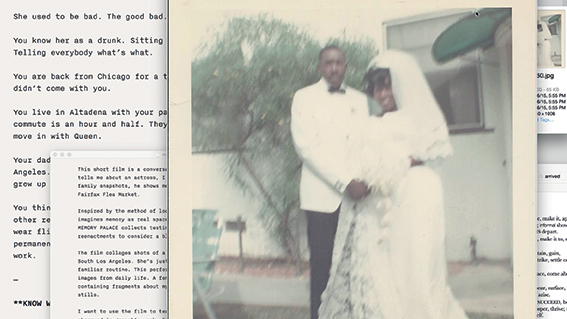Purple Magazine
— The Los Angeles Issue #30 F/W 2018
martine syms
los angeles
art
martine syms
interview by MAURIZIO CATTELAN AND MARTA PAPINI
portrait by TAYLOR RAINBOLT
All artworks copyright of the artist
 MARTINE SYMS AND KAHLIL JOSEPH STILL FROM MEMORY PALACE, 2015
MARTINE SYMS AND KAHLIL JOSEPH STILL FROM MEMORY PALACE, 2015
Los Angeles artist Martine Syms explores all avenues of contemporary African-American identity politics, and ostracism in popular culture. She plays with a variety of media, including video, performance, and writing, to create visually stimulating installations. She’s also the founder of Dominica Publishing, an artists’ imprint dedicated to the topic of blackness in art and culture.
MAURIZIO CATTELAN AND MARTA PAPINI — How long have you been living in Los Angeles?
MARTINE SYMS — I was born and raised here.
MAURIZIO CATTELAN AND MARTA PAPINI — Where do you feel LA is placed today: east of China or west of New York?
MARTINE SYMS — My experience of Los Angeles has always been east of…